June 19, 2020
Note: This is the sixth in a series of blogs on using your assessment data to address learning gaps during the 2020–2021 school year.
As we noted at the outset of this series, you may feel as if you have more questions than answers about Back-to-School (BTS) 2020. Will you be able to safely reopen school buildings? How much will your students be affected by COVID-related learning loss? Will you have to make up all of the lost ground during the 2020–2021 school year? If so, where do you even begin?
This blog series is meant to help you answer these questions, providing insights and tips on planning for multiple school-opening scenarios, on gathering baseline data, and on preparing to meet students’ social-emotional needs. We also discussed a type of content unique to Renaissance—our Focus SkillsTM—which are the most essential reading and math skills at each grade level, based on your state’s learning standards. In our last blog, we suggested that concentrating instruction on Focus Skills will be critical for closing learning gaps in the new school year.
In this blog, we’ll continue this discussion by explaining why mastery is a realistic goal for every learner in the new school year. We’ll also consider the relationship between Focus Skills and mastery, and explain how you can best monitor and support each student’s journey toward mastery. Before we begin, we encourage you to explore the reading and math Focus Skills for your state, if you haven’t done so already. You can easily access Focus Skills online—along with a research brief describing how Renaissance identifies these essential skills—by clicking here.
Proficiency vs. mastery: What’s the difference?
A lot of time and ink have been devoted to discussions, white papers, policies, and practices related to proficiency and mastery, often treating these terms as if they’re synonymous. They are separate concepts, however. Proficiency refers to meeting grade-level benchmarks at specific points within the academic year. Reading proficiently by the end of third grade, for example, indicates that a student is at the right point along the journey.
By design, proficiency represents “good enough for now”—and that’s fine. We need clearly delineated checkpoints along the way to see whether students are progressing at an appropriate pace. Are we on the right track? If not, how do we pivot? But even when a student has reached a specific point along the journey, the eventual destination—mastery—may not yet have been reached.
In contrast to proficiency, the French gave us the word mastery, which is described as “intellectual command,” a confident, authoritative grasp of learning. What would the 2020–2021 school year look like if students became confident in their mastery of Focus Skills—confident to the point that they saw themselves as authorities, for example, on drawing lines of symmetry (a grade 4 Focus Skill), or applying context clues to recognize vocabulary (a kindergarten Focus Skill), or explaining the impact of the author’s word choice on the reader (a grade 7 Focus Skill)?
Why mastery is the goal
A discussion of Focus Skills and mastery is important because, as Lemov et al. (2012) point out, “If you are practicing one of those important skills—the 20 percent of skills that drive 80 percent of the results—don’t stop when your participants ‘know how to do it.’ Your goal with these 20 percent of skills is excellence, not mere proficiency.” Further, Lemov and his co-authors urge us to focus so that our students become “great at the most important things.”
This is how we will get students definitively back on track after the disruptions caused by COVID-19. Further, these skills will transfer well in the future. A continued focus on mastering the most critical skills continually prepares learners for what is to come.
So, how do we gauge students’ mastery of Focus Skills? Star Custom, which is part of the Star Assessments suite, is a mastery measure. By definition, a mastery measure focuses on a single skill and seeks to find each student’s level of mastery of that skill. Typical mastery measures, often called probes, are designed to gauge mastery quickly. Most often, scoring 80 percent (e.g., 4 out of 5 items answered correctly) indicates mastery. Granted, you may not be an authority at 80 percent, but you are well on your way.
Mastering the most critical skills
Because of the disruptions caused by COVID-19, many educators are facing questions they haven’t dealt with before. How can you best monitor the success of your remote learning activities? Are students still learning, even though they’re not physically in school? How do you monitor the efficacy of interventions?
Renaissance has been helping educators answer questions like these for a long time, and we’re here to support you during this global pandemic. Perhaps your district decided not to administer the Star Reading and Star Math tests remotely this spring or summer. You still have assessment options.
Several years ago, our customers asked us for a formative assessment tool to serve as a companion to the computer-adaptive Star tests. They told us, “We administered Star, so we know what to teach next, but we want to be able to measure what we just taught and set up a cycle of informed instruction.” We listened, and we created Star Custom in response. Currently, Star Custom includes skill checks for nearly all of the Renaissance Focus Skills—as well as for many non-Focus Skills. If you have the full Star Assessment suite, you have access to Star Custom.
Star Custom has items for nearly every skill on the learning progression, and teachers can create assessments for as many skills and standards as they’d like. As mentioned above, we have also created skill checks that can easily be discovered by teachers and assigned to students. These skill checks are mini-assessments of 5–7 questions that assess an individual skill, and many Focus Skills have multiple skill checks available. Teachers can use the Renaissance Planner to choose the skills they are teaching and to find both assignable resources and Star Custom skill checks to support instruction and assessment.
So, what does this process look like?
When students log in, they see the skill check(s) assigned to them, as shown below.
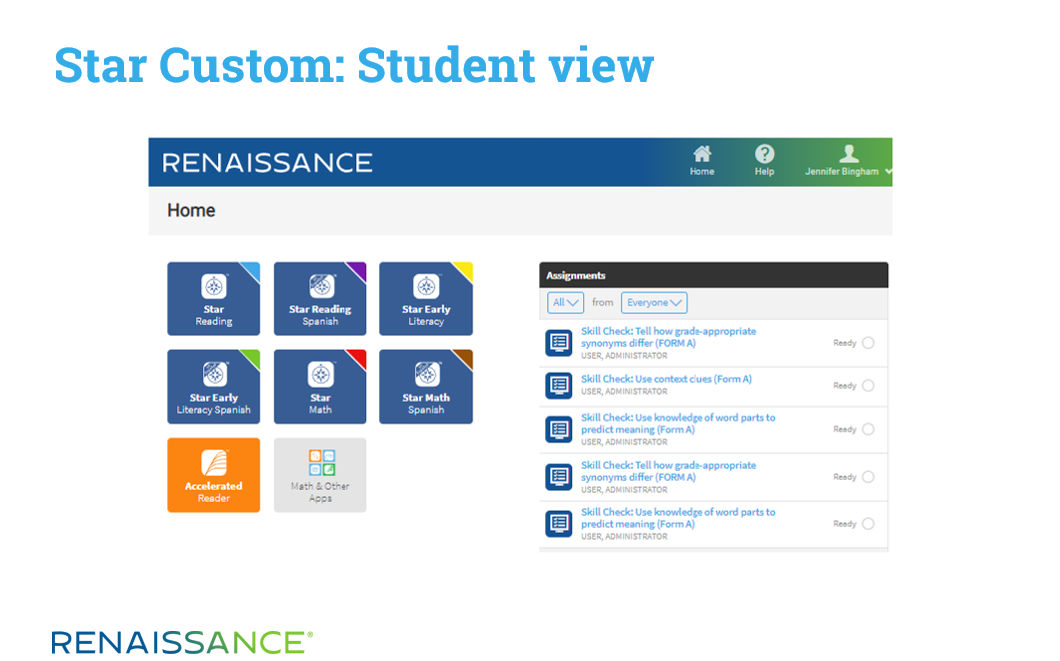
A simple click starts the test, and students get immediate feedback when they finish. This is in line with research showing the important role of constructive feedback (e.g. Marzano et al., 2001; Rattan and Good, 2012). It also provides students with the opportunity to review their responses and learn from their errors.
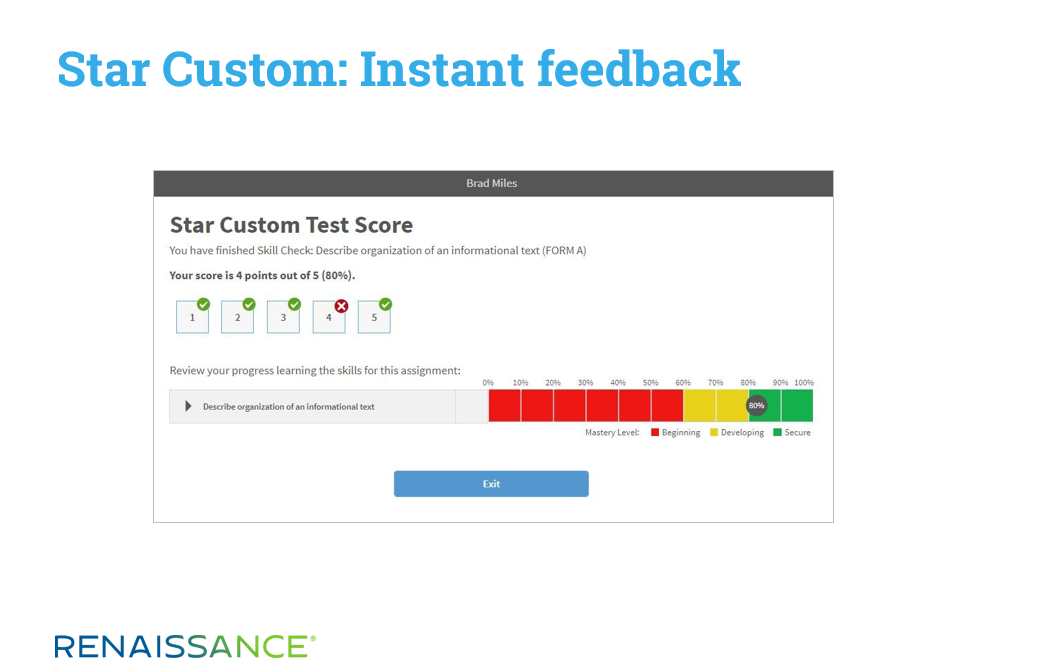
In fact, when students review, respond to, and learn from errors, assessment becomes another resource for learning. As Stiggins (2017) writes, assessment as a resource for learning is something done not to students but in partnership with them. “The inferences students make about themselves based on their interpretation of their assessment results are as important as decisions made by their teachers and school leaders,” he adds.
Monitoring progress toward mastery
Student results on Star Custom skill checks are immediately visible to teachers in multiple reports, including a detailed item analysis.
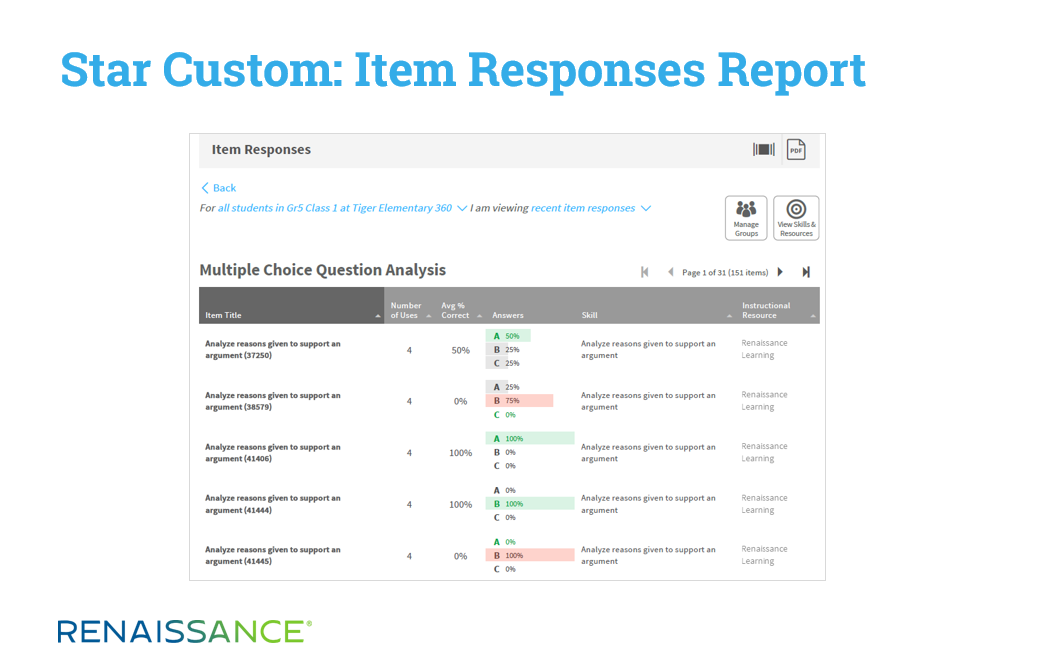
Data from Star Custom also flows into Star’s mastery views and supplements the data from the computer-adaptive Star tests that is already there. However you use Star Custom, the data flows into the mastery view at the skill level, so you can monitor student mastery in real time and better tailor instruction to meet students’ specific needs—both at BTS 2020 and throughout the new school year.
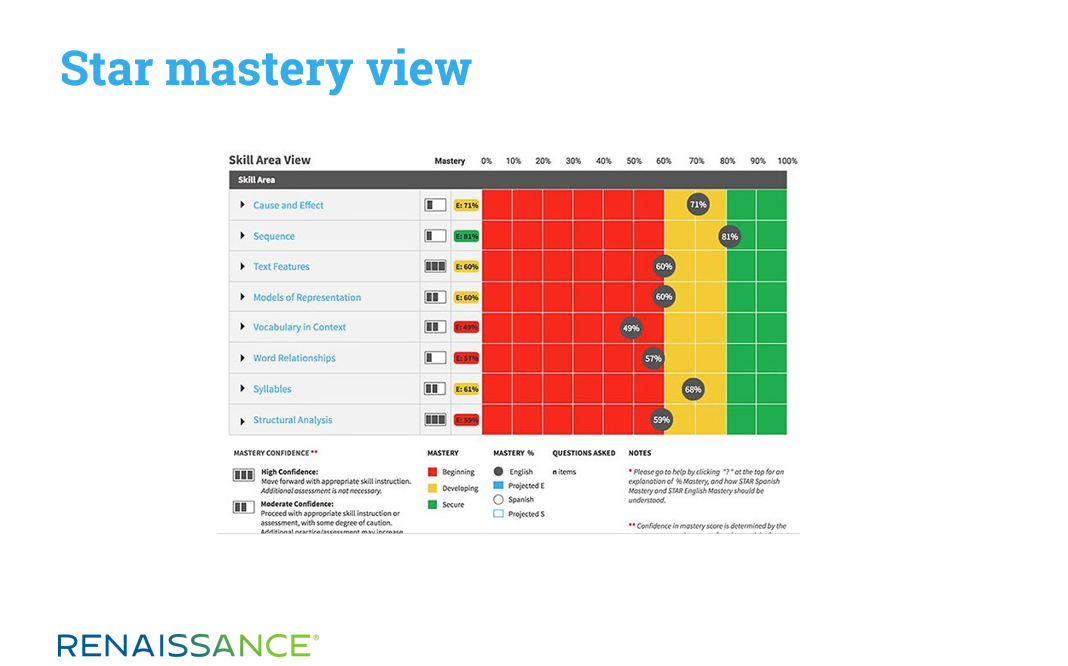
Star Custom skill checks can be used to pre- and post-test students in order to assist teachers in determining the efficacy of an intervention or the success of a small-group lesson. Longer, teacher-created Star Custom assessments can measure the success of a unit of instruction or serve as a weekly review. The Skills Status Report allows you to monitor progress on the specific skills you have taught and assessed.
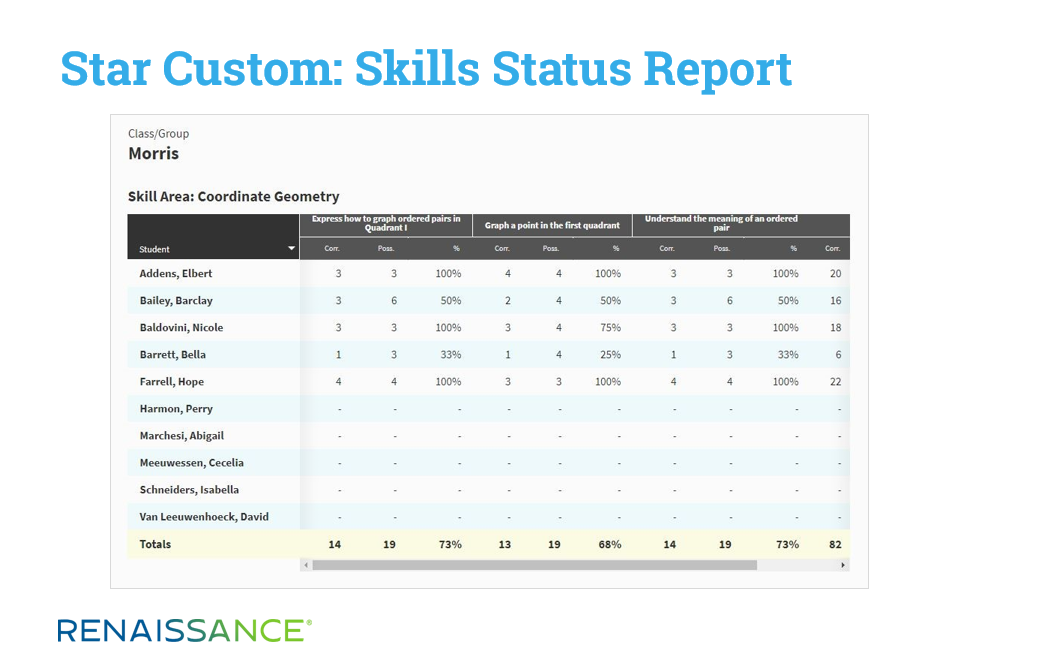
For a quick overview of how to make the most of Star Custom, watch this short walk-through video:

Creating and assigning skill checks in Star Custom
Data and insights to close gaps in learning
This brings us to the final part of our discussion: Is mastery a realistic goal for the 2020‒2021 school year, given the ground that we’ll need to make up after this spring’s extended school closures?
In response to this question, picture a kindergarten student confidently leading her peers in the power of using context clues to recognize words. Or a grade 4 student having an “ah ha” moment after guiding her classmates to finally “get” symmetry and understand why it’s so important. Or a grade 7 student deep in debate, defending an author’s word choice—and using evidence from the text to support his argument.
Mastery is not only possible but absolutely critical for reversing COVID-related learning loss. Star Assessments—including Star Custom and Renaissance Focus Skills—provide tools and resources to support you and your students every step of the way. We fully acknowledge that BTS 2020 will present unique challenges—but we also believe there are clear steps you can take to help every student thrive.
In our next blog, we’ll take an in-depth look at student growth, including how best to measure growth in the new school year.
References
Marzano, R., et al. (2001). Classroom instruction that works. Alexandria, VA: ASCD.
Lemov, D., Woolway, E., & Yezzi, K. (2012). Practice perfect: 42 rules for getting better at getting better. San Francisco: Jossey-Bass
Rattan, A., and Good, C. (2012). “It’s OK—Not everyone can be good at math”: Instructors with an entity theory comfort (and demotivate) students. Journal of Experimental Social Psychology 48(3): 731–737.
Stiggins, R. (2017). The perfect assessment system. Alexandria, VA: ASCD.
Read the next blog in this series for insights on monitoring progress and growth, along with tips for establishing your screening windows for the 2020–2021 school year.

